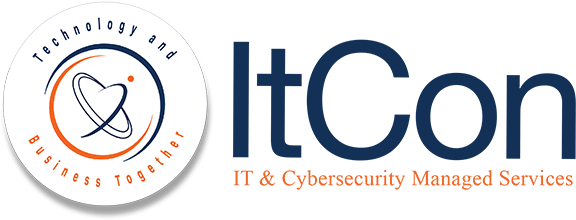WHY THE HEALTHCARE INDUSTRY IS SO HEAVILY TARGETED
 The healthcare industry‘s rapid digitization and extensive reliance on the Internet of Things (IoT) have positioned it as a prime target for cybercrime. As patient data, sensitive medical records, and critical infrastructure become increasingly digitized and interconnected, they create an appealing landscape for cybercriminals seeking to exploit vulnerabilities. The high value of personal health information on the black market, coupled with the often inadequate cybersecurity measures, underscores the industry’s susceptibility to attacks. This convergence of valuable data, technological complexity, and security gaps has propelled the healthcare sector to the forefront of cybercriminal interest, highlighting the urgent need for robust cybersecurity strategies to safeguard patient privacy and ensure the integrity of medical services.
The healthcare industry‘s rapid digitization and extensive reliance on the Internet of Things (IoT) have positioned it as a prime target for cybercrime. As patient data, sensitive medical records, and critical infrastructure become increasingly digitized and interconnected, they create an appealing landscape for cybercriminals seeking to exploit vulnerabilities. The high value of personal health information on the black market, coupled with the often inadequate cybersecurity measures, underscores the industry’s susceptibility to attacks. This convergence of valuable data, technological complexity, and security gaps has propelled the healthcare sector to the forefront of cybercriminal interest, highlighting the urgent need for robust cybersecurity strategies to safeguard patient privacy and ensure the integrity of medical services.
Here are some of the key reasons why malicious actors so aggressively target the healthcare industry:
- Valuable Data: Healthcare organizations store a vast amount of valuable data, including personal and financial information, medical histories, insurance details, and more. This data is highly sought after by cybercriminals for identity theft, financial fraud, and other malicious purposes.
- Lack of Cybersecurity Preparedness: Many healthcare institutions historically have lagged behind in terms of cybersecurity investments and practices. Limited resources and complex, legacy systems can make it challenging to implement robust cybersecurity measures.
- Complex Ecosystem: The healthcare industry has a complex ecosystem involving hospitals, clinics, insurance providers, pharmaceutical companies, and more. This complexity can create vulnerabilities at various touchpoints within the system.
- Human Factors: Healthcare employees often handle sensitive information and may be targeted through phishing emails or social engineering. Human error, such as inadvertently clicking on a malicious link, can lead to security breaches.
- Ransomware: Ransomware attacks have become a major threat to healthcare organizations. Attackers encrypt the organization’s data and demand a ransom for its release. Healthcare providers may be more likely to pay the ransom due to the critical nature of patient care and the urgency to restore services.
- Regulatory Environment: Healthcare is subject to strict regulatory frameworks, such as the Health Insurance Portability and Accountability Act (HIPAA) in the United States. Meeting these regulations can be challenging, and non-compliance may result in significant penalties.
- Monetary Gain: Stolen medical records and sensitive data can be sold on the dark web for substantial sums of money. Additionally, the disruption caused by cyberattacks can lead to financial losses, making healthcare a profitable target for cybercriminals.
- Critical Infrastructure: Healthcare systems are essential to public health and safety. Disruption of medical services can have dire consequences, and attackers may exploit this vulnerability to extort organizations or governments.
- Legacy Systems: Healthcare organizations often use outdated software and technology due to budget constraints and compatibility issues. These legacy systems may have known vulnerabilities that can be exploited by cybercriminals.
WHAT IS CYBERSECURITY?
Cybersecurity is a branch of information technology encompassing risk assessments, prevention of data breaches, protection against malware, and defenses against cybercrime. A comprehensive information security plan will include the following elements:
- Risk management through managed detection of cybersecurity risks and prompt, effective responses
- Endpoint and network security solutions that ensure connectivity while mitigating risks to patient data
- Implementation of robust cybersecurity measures, including antivirus, multi-factor authentication (MFA), advanced firewalls, as well as other risk mitigation tools
- Creation of a detailed incident response plan to limit patient exposure in the case of a data breach or security incident
- Professional training and education for staff members in proper security techniques andbest practiceswhen handling patient information and accessing electronic health records (EHRs)
- Establishment of security operations centers to streamline response times for security information and event management
- Proactive cloud and server protections and security tools designed to address cybersecurity risks in real time
- Cloud security measures that allow your organization to stay in compliance with HIPAA and that offer superior protection for sensitive EHR data and other organizational and patient information
Maintaining a proactive security posture in the healthcare industry is especially important. The information contained in EHRs and other patient records is confidential and could cause real harm to patients if released or accessed by unauthorized individuals.
WHAT DOES HIPAA REQUIRE OF HEALTHCARE PROVIDERS?
HIPAA‘s Security Rule requires that healthcare facilities and providers institute measures to protect patient data that is recorded, transmitted, or stored under their oversight. This generally includes the following activities:
- Educating staffabout best practices in securing patient data can reduce cybersecurity risks caused by phishing, social engineering, and failure to maintain adequate security for confidential and sensitive information.
- Controlling accessto electronic health records and other sensitive information is also required under the provisions of the Health Insurance Portability Accountability Act. This includes physical security for record rooms and connected devices, as well as security measures designed to prevent unauthorized access to online records stored on servers or in the cloud.
- Establishing and maintaining strong security measuresand endpoint protection will provide superior protection for patient information and allow your organization to stay in compliance with all applicable regulations and laws pertaining to data security.
- Performing reviewsof existing security measures and upgrading them as needed can help you take on today’s challenges while preparing proactively for the cybersecurity risks and threats on the horizon.
- Working with a company that specializes in information securityfor healthcare organizations can help you manage cyber threats more effectively. Security professionals with experience in the healthcare industry can provide you with the best protection against malware, ransomware attacks, data breaches, and many other cybercrimes. This can ensure full compliance with all HIPAA regulations and requirements now and in the future.
Making sure your healthcare organization remains in full compliance with all applicable regulations and requirements can provide your patients with greater peace of mind and can reduce the risk of healthcare data breaches that could affect your reputation and the financial stability of your operations. Healthcare data is a popular target for cybercrime and can be used to gain further access to financial or personal records if a data breach occurs. Knowing the risks and pain points for securing sensitive information can help your facility protect itself from these serious threats to your organization.
IDENTIFYING THE TOP FIVE CYBERSECURITY THREATS TO PATIENT PRIVACY
Addressing vulnerabilities in the cybersecurity of healthcare facilities is one of the first steps in maintaining compliance with federal regulations regarding electronic health records and patient data. According to the U.S. Department of Health and Human Services, the top five threats impacting healthcare providers in the security field are listed below:
- Phishing attacks and social engineering: Many data breaches occur because of errors made by staff members who inadvertently provide the means of access to cybercriminals. Phishing is the use of fake credentials or misrepresentation to trick others into allowing access to confidential information. In many cases, cybercriminals and hackers pose as trusted corporate partners or patients needing assistance. This can result in the release of confidential patient information or unauthorized access to medical records that could be used against your organization or your patients.
- Ransomware attacks: Ransomware is a form of malware that locks up critical processes on individual computers, networks, or servers. The ransomware attack usually occurs when a staff member opens an email or clicks on a link infected with the malware. The ransomware program then encrypts files on the computing system to render them inaccessible. In most cases, the responsible parties then demand a financial payment to provide an encryption key. Paying the guilty parties, however, is no guarantee that access will be restored to your organization. Avoiding ransomware attacks is the most practical solution for managing these cybersecurity risks.
- Loss or theft of computer systems: Laptops, computer systems, and other devices that contain or have access to electronic health records or other protected health information (PHI) must be protected against cyber attacks, unauthorized access, and physical theft. This is often best accomplished by creating an integrated security plan that incorporates information and data security along with physical security for your healthcare facility.
- Accidental or deliberate data loss: Accidental data loss can happen when an inexperienced colleague deletes information inadvertently or in an uncontrolled way. It differs from deliberate data breaches and data losses in motive alone. The adverse effects of unintended or malicious data loss can be catastrophic for your healthcare organization and can reduce patient confidence in your ability to provide the proper care for their needs.
- Attacks by hackers on medical networks and devices: Direct attacks by hackers often fall into the category of distributed denial-of-service or DDoS attacks. These cybercrimes occur when a user or multiple users flood your server with incoming traffic to prevent patients from accessing it. Hackers can also use advanced tools to identify passwords and login information. Using strong passwords and high-level encryption offers the best defense against these types of attacks.
Failing to protect your organization and patient data from these five major threats could put you on the wrong side of federal regulations. Working with a firm that specializes in healthcare cybersecurity is often the most practical way to manage all aspects of implementing and maintaining security for electronic health records and other confidential data.
For many healthcare organizations, outsourcing security to a team with proven experience in managing HIPAA requirements and providing real protection against cyber threats can be a cost-effective solution to these issues. ItCon Inc. has a suite of solutions that can be customized to suit the needs of your healthcare facility. We are here to help you maintain the best protection for your confidential information and to provide proactive risk management for your organization now and in the future. For a free consultation contact us at 845-738-1661 ext 101 or book a consult on our dedicated compliance website https://www.aegistd.com/cyber-insurability.



